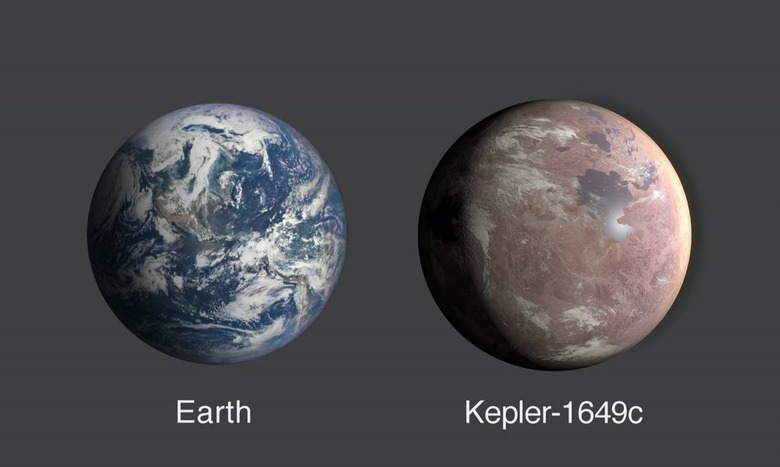First Overlooked, This Earth-Like Exoplanet Has Goldilocks Potential
Life down on Earth may be fairly weird right now, but that isn't stopping scientists from sifting through NASA data to try to identify Earth-like planets out in the universe. The Kepler space telescope may have retired, but the cache of data it collected keeps turning up potential Earth-size exoplanets that could be home to alien life. Some, though, are more similar to our home world than others.
That's just the case with Kepler-1649c, which a team of scientists led by a researcher at the University of Texas at Austin have spotted in the Kepler data. It's certainly no close neighbor, being 300 light years from Earth, but it's the most similar in size and estimated temperature out of all the candidates Kepler has discovered.
In fact, Kepler-1649c is only 1.06 times larger than Earth. It receives 75-percent of the light from its host star as Earth does from our Sun, too. That means its surface temperature could well be similar.

Ironically, though, Kepler-1649c was overlooked in earlier processing of the space telescope's findings. One of the challenges – and one of the reasons post-retirement analysis can still be so important – with the mission was that actually picking out possible Earth-size exoplanets from the raw data all comes down to the quality of the algorithms implemented. The team, which released a paper today in The Astrophysical Journal Letters detailing their findings, looked beyond those algorithms, and hence caught Kepler-1649c.
Kepler's strategy was astonishingly simple. The space telescope would be aimed at a distant star, and then look for dips in brightness in them. That could represent a planet passing in front of the star, though it could also be a natural change in stellar activity or something else entirely.
To whip this so-called transit method data into something usable, scientists needed to filter out false-positives. The original tool for that, Robovetter, was designed to flag the 12-percent of brightness dips that could be blamed on passing planets. However it was also responsible for a number of mistakes.

Robovetter had, indeed, mislabeled Kepler-1649c, and it was only this more recent analysis which corrected that. It's why, despite the space telescope having only hunted this particular area of sky between 2009 and 2013, new exoplanets can still be plucked out of the data. All the same, just because the newly-identified planet is close to Earth in dimensions, doesn't mean it's automatically a good candidate for harboring life.
The exoplanet's atmosphere, for example, is unknown: that could make a huge impact on surface temperatures. The fact that it orbits a red dwarf, meanwhile, could make it the victim of stellar flare-ups, NASA points out.
All the same, while there are exoplanets closer to Earth in size, or in temperature, Kepler-1649c is the first to satisfy both those criteria and fall within the so-called habitable zone of its system. Combined with the fact that the system's orbits are notably stable, it leaves Kepler-1649c a solid candidate among the space telescope's findings.
